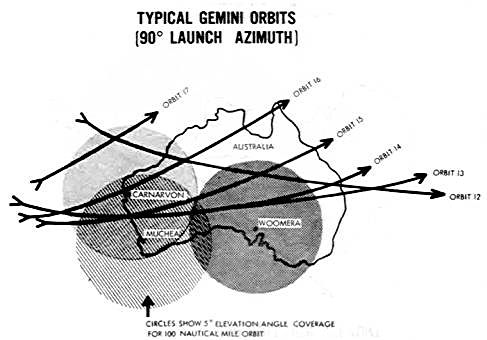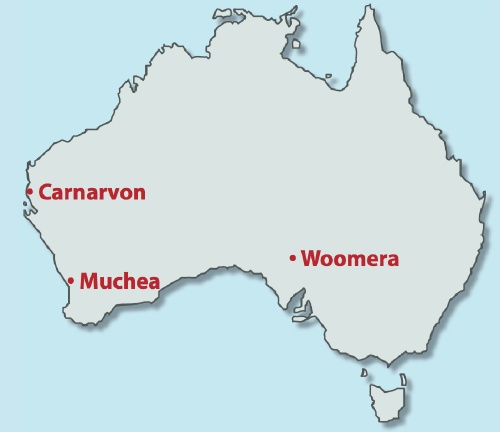Eastablished in 1960, Muchea (pronounced “Mew-shay”) Tracking Station,
60km north of Perth in Western Australia, was a key station for the Mercury
Project.
It was Project Mercury tracking Station No 8, and was one of two Australian stations in the Mercury network. The second station, No 9, was located at Red Lake, north of Woomera, South Australia.
Both stations were managed and operated by the Weapons Research Establishment of the Department of Supply for NASA.
The Muchea station was a typical installation with radar and acquisition aid tracking systems, telemetry reception and air-to-ground voice communication facilities. Because of its geographical position, being situated almost 180° in Longitude from the launch site, it was selected to have a command facility as well as normal tracking, telemetry and voice capabilities. In fact, it was the
only Mercury Command station outside the United States.
Muchea used a Teltrac system to acquire and communicate
with the Mercury spacecraft, and VERLORT (Very Long Range Tracking)
radar equipment to provide accurate ranging data.
The station was offically opened on Friday, March 24th 1961.
Muchea Communications Technician Gerry O’Connor
became the first Australian to hail a space traveller on 20th February
1962, when he called John Glenn in Friendship 7 on his first pass over the
West Australian coast. (56kb
mp3 file) (More on the Friendship 7 page.)
After a brief but distinguished career, Muchea
closed in February 1964. The development of the Carnarvon Tracking Station for Gemini and Apollo meant that Muchea, after its pioneering work, was no
longer needed. The staff scattered – some returning to alternate employment
in Perth, others went to Carnarvon and others to Canberra.
Location
Muchea’s location was 31° 35' 41.566"
Latitude, 115° 56' 04.589" Longitude. Height AMSL: 94.612 metres
(data: Hamish Lindsay), adjacent to the Pearce bombing range – and about
11km NW of the Pearce RAAF Base.
The tracking station was about 4km WSW of the
rural township of Muchea.
In 2005, the population of the township was estimated
to be 350. In 2017, a number of new homes have been built, and a new subdivision is planned. As well, a major transport interchange and industrial park is being constructed just to the east of the town (2019).
Mrs. Marion Martin, a Muchea resident, and President of the Historical Society, relates that the town was supposed to be called “Muchela”. When the sign was painted at the new railway station, the “l” was left out, and the town became known as Muchea.
Follow this
link to see Muchea on Google Earth.
|
|
Muchea and Woomera (Red Lake) tracking stations were established to support the Mercury Project. After Mercury, the Carnarvon station was built to support Gemini and Apollo.
|
|
|
This 1963 NASA
sketch shows demonstrates how Carnarvon was better placed to track
the low-earth-orbiting Gemini spacecraft.
|
For more on Muchea and Project Mercury, see also: Tracking Apollo to
the Moon, by Hamish Lindsay, pages 38 – 89.
Back to
the main Muchea page.

